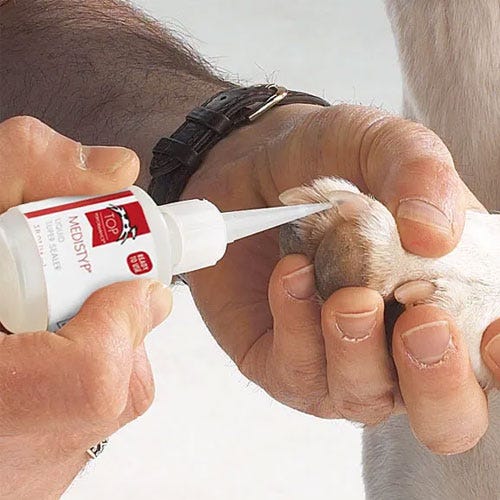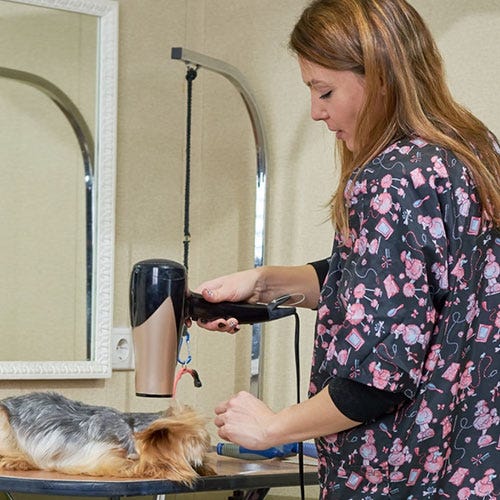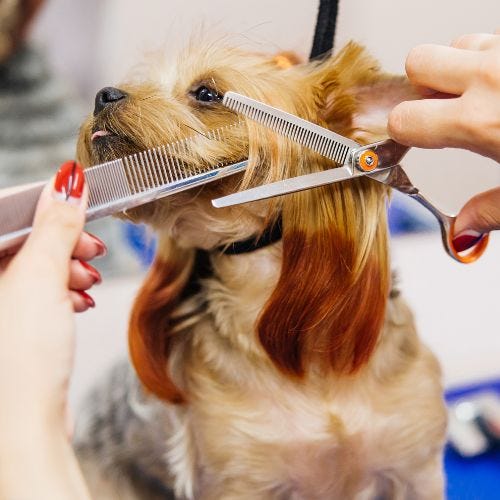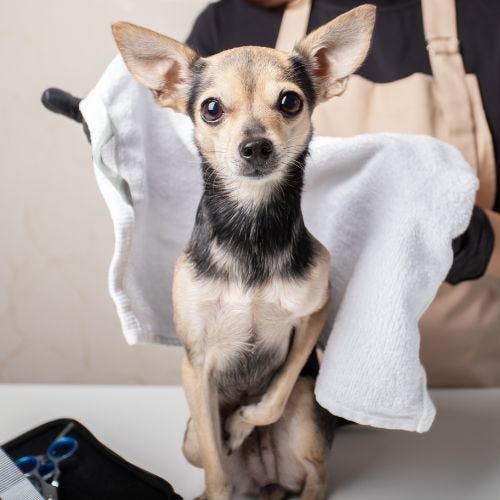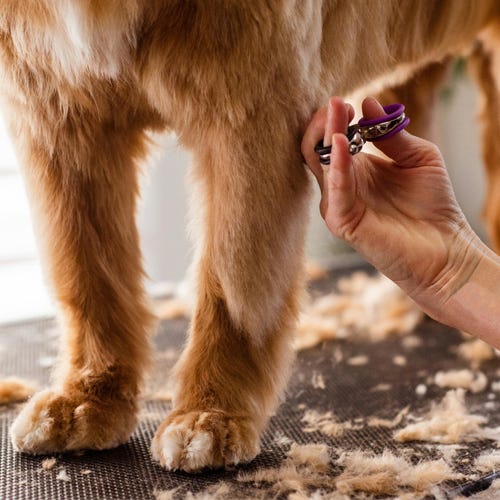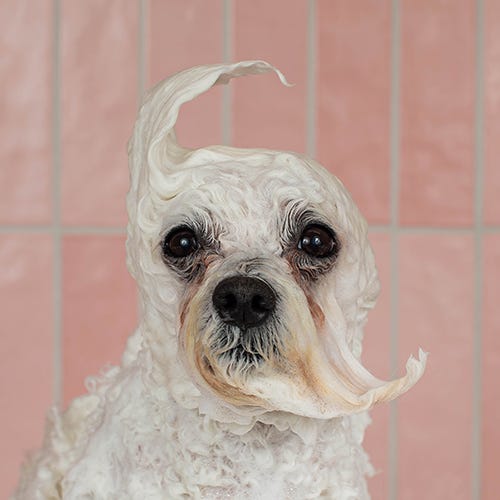Most groomers have styptic powder on hand and use it regularly to stop bleeding if a claw is accidentally trimmed too short, but have you ever wondered what it is made of and how it works?
Most frequently sold in powdered form, styptic powder (or liquid) is an anti-hemorrhagic designed to stop bleeding in minor wounds. My first introduction to such products was in the form of a pencil that my father kept on hand in case he nicked his face while shaving. Since the invention of safer razors, most people no longer need to have styptic products on hand. Interestingly enough, styptic products for humans and animals differ in their makeup. The ones designed for humans often contain ingredients such as yarrow, comfrey leaf, and cayenne pepper. Styptic intended for animal use omits these ingredients because they could be toxic if the pet licks them off.
The styptics designed for use on animals usually contain ferric subsulfate, which clots blood; bentonite clay for clotting and absorbing; potassium aluminum sulfate, which is an astringent (designed to cause cells to contract); and perhaps diatomaceous earth, which has absorbent qualities. Some brands also contain an analgesic property to reduce the pet's discomfort.
Groomers rely on styptic products to stop bleeding when a nail is trimmed too closely. To be most effective, the blood should be dried off, then a small amount of styptic is applied to the tip of the nail and gently pressed there for a moment. Sometimes, more than one application may be necessary. Small styptic holders are available and designed to hold a bit of powder inside. The nail can be pressed into the opening of the container for a neat application of the styptic. Cotton-tipped first aid applicators work very well, too. Dampen the tip, coat it with powder, and apply it to the nail. Alternately, the powder may be used simply by pinching a bit between your thumb and forefinger or by gathering a bit of the powder on a dampened fingertip and pressing it against the nail.
The ingredients in styptic powders turn brown or black when they come in contact with water and will stain the fur. This staining is almost impossible to remove, so it is best not to use a styptic on wet animals.
Styptic powder is not designed for use on deep cuts. Doing so can cause cellular damage that could delay normal healing.
If the pet licks off the slight residue left on the nail, there is no need to be concerned.
Styptic products are an inexpensive, effective, and safe tool for groomers to use when nail trimming accidents occur.


